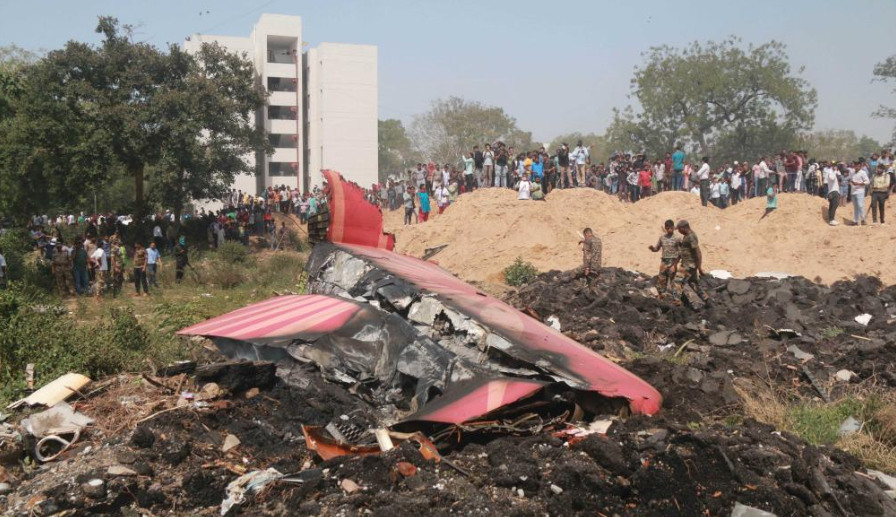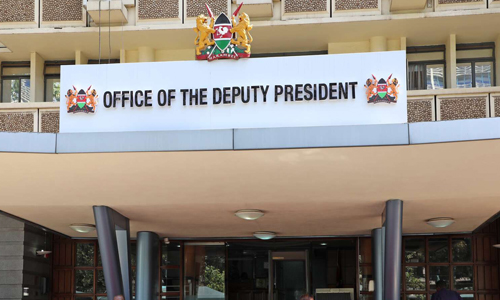Air India crash report reveals both engines shut down shortly after takeoff

The aircraft was operating Flight AI171 from Ahmedabad to Gatwick and crashed at 8:09 am, coordinated universal time (UTC), immediately after takeoff.
The Aircraft Accident Investigation Bureau (AAIB) of India has confirmed that fuel-control switches on an Air India flight that crashed in June had been turned off shortly after takeoff, but said they had been turned back on before impact.
This is according to its preliminary findings of the June 12 accident involving flight B787-8 aircraft bearing registration VT-ANB that killed 241 out of the 242 passengers on board at Ahmedabad, a city located in the western state of Gujarat.
More To Read
- More than 40 Indians feared dead in Saudi Arabia bus crash
- Boeing reaches settlements with families of three Kenyans killed in Ethiopian Airlines crash
- Ethiopian Airlines soars with eight per cent revenue growth despite global disruptions
- One dead after flash flood sweeps Indian village, over 100 missing
- Boeing reaches settlement with Kenyan-Canadian man whose family perished in Ethiopian Airlines crash
- Ethiopian Airlines partners with DRC to launch Air Congo
The aircraft was operating Flight AI171 from Ahmedabad to Gatwick and crashed at 8:09 am, coordinated universal time (UTC), immediately after takeoff.
A team of local experts and foreign experts was then gathered to probe the accident with a bid to prevent similar occurrences in future and discovered that the Boeing 787-8, manufactured in 2013 achieved the maximum recorded airspeed of 180 knots IAS at about 8:08:42 UTC, and immediately thereafter, Engine 1 and Engine 2 fuel cutoff switches transitioned from RUN to CUTOFF position one after another with a time gap of 1 sec.
"Engine N1 and N2 began to decrease from their take-off values as the fuel supply to the engines was cut off. In the cockpit voice recording, one of the pilots is heard asking the other why did he cut off. The other pilot responded that he did not do so," the report states.
It adds that as per the EAFR data, both engines' N2 values passed below minimum idle speed, and the RAT hydraulic pump began supplying hydraulic power at about 8:08:47 UTC.
"As per the EAFR, the Engine 1 fuel cutoff switch transitioned from CUTOFF to RUN at about 08:08:52 UTC. The APU Inlet Door began opening at about 8:08:54 UTC, consistent with the APU Auto Start logic. Thereafter, at 8:08:56 UTC, the Engine 2 fuel cutoff switch also transitions from CUTOFF to RUN. When fuel control switches are moved from CUTOFF to RUN while the aircraft is in flight, each engine's full authority dual engine control (FADEC) automatically manages a relight and thrust recovery sequence of ignition and fuel introduction. The EGT was observed to be rising for both engines, indicating relight. Engine 1's core deceleration stopped, reversed, and started to progress to recovery. Engine 2 was able to relight but could not arrest core speed deceleration and reintroduced fuel repeatedly to increase core speed acceleration and recovery. The EAFR recording stopped at 8:09:11 UTC. At about 8:09:05 UTC, one of the pilots transmitted "MAYDAY MAYDAY MAYDAY".
The ATCO enquired about the call sign and did not get any response, but observed the aircraft crashing outside the airport boundary and activated the emergency response.
As the aircraft was losing altitude, it initially made contact with a series of trees and an incineration chimney inside the Army Medical Corps compound before impacting the northeast wall of a Building at the accident scene.
As the aircraft moved forward, it continued fragmenting and collided with other structures and vegetation. The impact witness marks on the building and aeroplane indicated a likely nose-up attitude (about 8°) and wings level.
The nose landing gear was found on the ground about 307 feet southwest of the initial point of contact with another Building as the left engine got separated from the airplane and struck the north corner of Building D at the ground level where it remained and was roughly perpendicular to the right engine resting position, at heading of approximately 326 degrees.
Other extensive damages are included in the report.
"The CCTV footage obtained from the airport showed Ram Air Turbine (RAT) getting deployed during the initial climb immediately after lift-off. No significant bird activity is observed in the vicinity of the flight path. The aircraft started to lose altitude before crossing the airport perimeter wall," the report said.
The report noted that the RAT was deployed, indicating a total loss of power and thrust in the aircraft. The report also showed that the flap settings and landing gear positions were normal at the time of the crash.
At 8:14:44 UTC, Crash Fire Tender left the airport premises for Rescue and firefighting. They were joined by the Fire and Rescue services of the Local Administration.
The flap handle assembly sustained significant thermal damage. The handle was found to be firmly seated in the 5-degree flap position, consistent with a normal takeoff flap setting. The position was also confirmed from the EAFR data. The landing gear lever was in the "DOWN" position.
The aircraft is equipped with two Enhanced Airborne Flight Recorders (EAFR) part number 866-0084-102. The EAFR is fitted at two locations, one in the tail section at STA 1847 and the other in the forward section at STA 335.
The two EAFRs are similar in construction and record a combined data stream of digital flight data and cockpit voice information, with both stored on the same device.
The downloaded flight data contained approximately 49 hours of flight data and 6 flights, including the event flight. The recovered audio was two hours in length and captured the event. Initial Analysis of the recorded audio and flight data has been done.
"The EAFR data downloaded from the forward EAFR is being analysed in detail. The statement of the witnesses and the surviving passenger have been obtained by the Investigators," the report adds.
Fuel samples taken from the bowsers and tanks used to refuel the aircraft were tested at the DGCA's Lab and found satisfactory.
It adds that a complete analysis of postmortem reports of the crew and the passengers is being undertaken to corroborate aeromedical findings with the engineering assessment.
At the same time, additional details are being gathered based on the initial leads.
"At this stage of investigation, there are no recommended actions to B787-8 and/or GE GEnx-1B engine operators and manufacturers. Investigation is continuing, and the investigation team will review and examine additional evidence, records, and information that is being sought from the stakeholders," the report concludes.
Top Stories Today










































